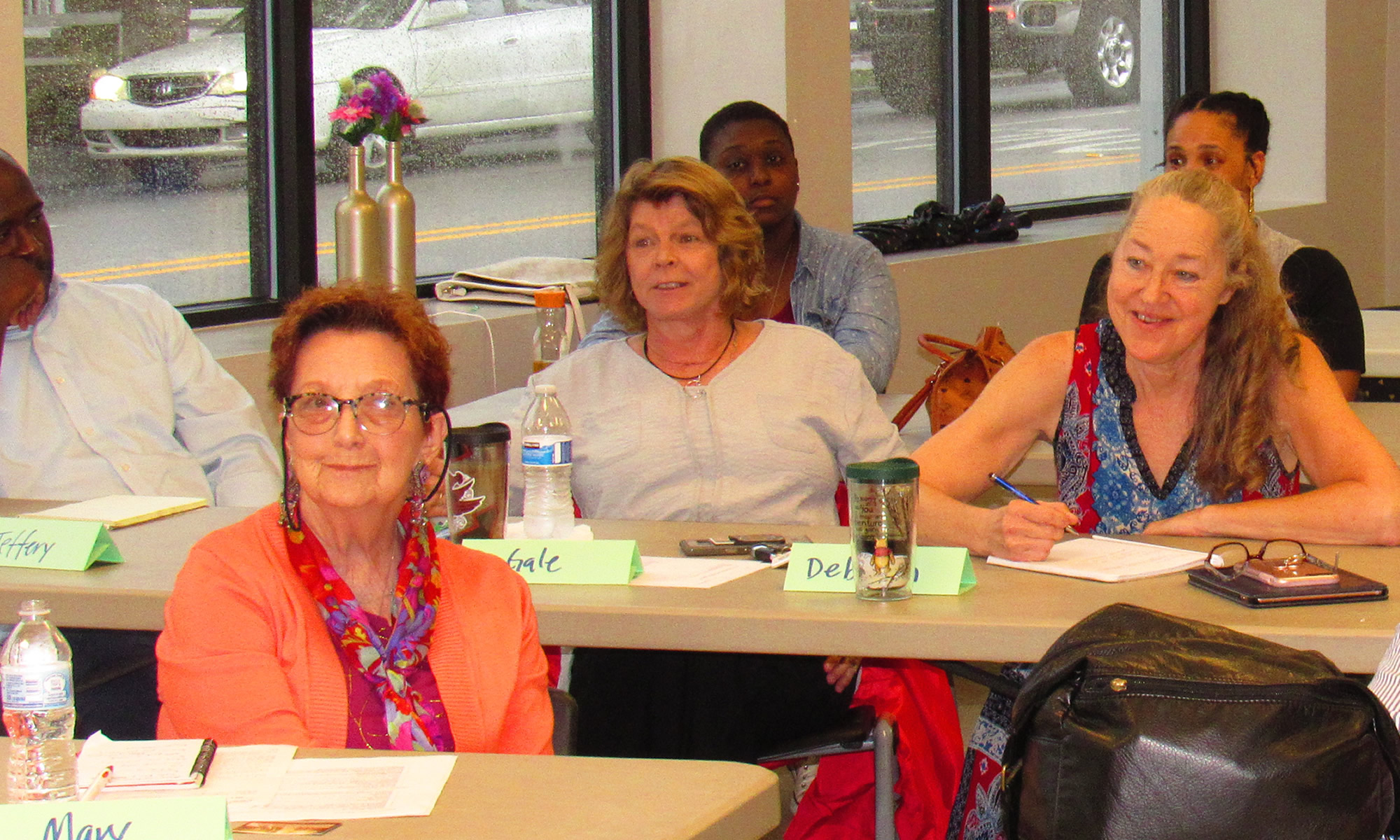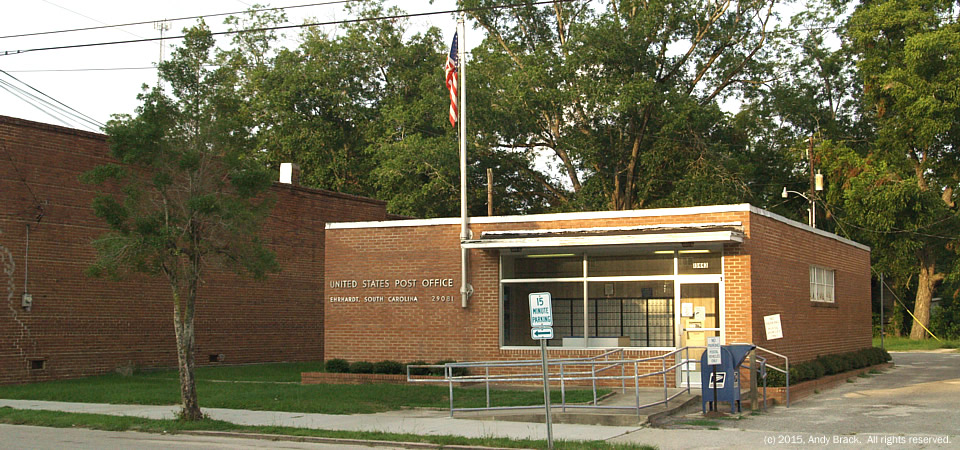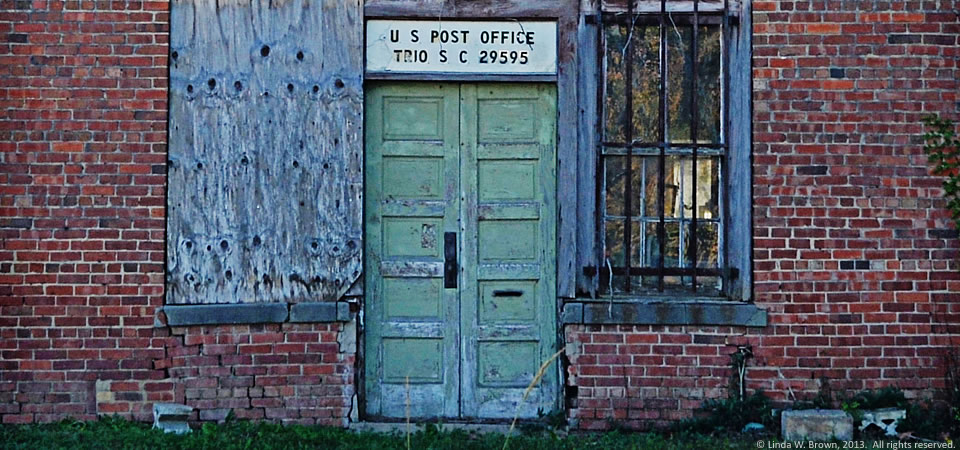A familiar feature in many small towns across the South is the standard 1960s post office, like the one pictured here in Ehrhardt, S.C. With challenges faced by the U.S. Postal Service and reductions in population in rural communities, small post offices face survival challenges. Photo by Andy Brack. All rights reserved.
Tiny post office, Sycamore, S.C.
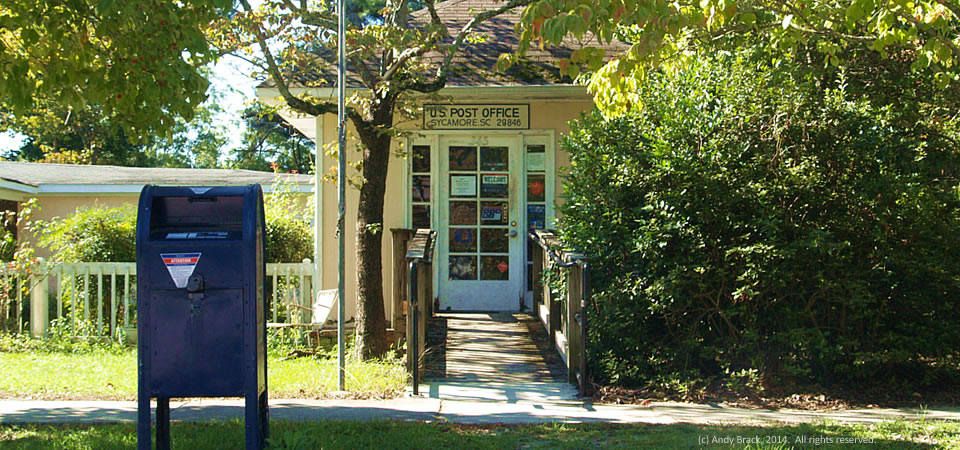
Sycamore, a South Carolina village in Allendale County of about 180 people,has a tiny, one-room post office on Main Street just off the main highway. It’s open from 8 a.m. to 10 a.m. on weekdays and from 8 a.m. to noon on Saturdays. According to a 2011 story, this post office and 27 others across South Carolina were scheduled for closure.
Sycamore is about 60 percent white with a 35 percent black community of residents. Unlike the whole of Allendale County with its almost 40 percent poverty rate, poverty is comparatively low at 10 percent in Sycamore.
- More about Allendale County from QuickFacts from the U.S. Census.
- More about Sycamore.
Photo by Andy Brack, Center for a Better South, Oct. 1, 2014. All rights reserved.
Another view, Trio, S.C.
Here’s a close-up of the old Bank of Trio (pronounced Try-o) in the once thriving rural community of Trio in southern Williamsburg County. (Click to see another view.)
“The Bank of Trio is long gone, but the building still remains as a reminder of more prosperous days,” says retired editor Linda W. Brown of Kingstree. In the building’s later years, it housed a general store (Rowell’s) and a post office.
Today, the building is abandoned and the 29595 zip code no longer is active. The community’s “post office” is a group of mailboxes by the side of the road. Trio was founded by the three Bryan brothers when the area’s main industries were lumber, turpentine and agriculture.
Just under 34,000 people live in Williamsburg County, which is about the number who lived there in 1900, according to Census figures. Population peaked in 1950 at 43,807, but has dropped slowly since then.
About two-thirds of county residents are black, with almost all of those remaining being white. Only 2 percent of those in the county are of Hispanic descent. Some 32.8 percent of residents live in poverty, according to the Census. Of the county’s 1,921 firms, 36.5 percent are black-owned — a percentage that is three times South Carolina’s average.
Photo taken Nov. 3, 2013, by Linda W. Brown. All rights reserved.
Tobacco field, Valentines, Va.
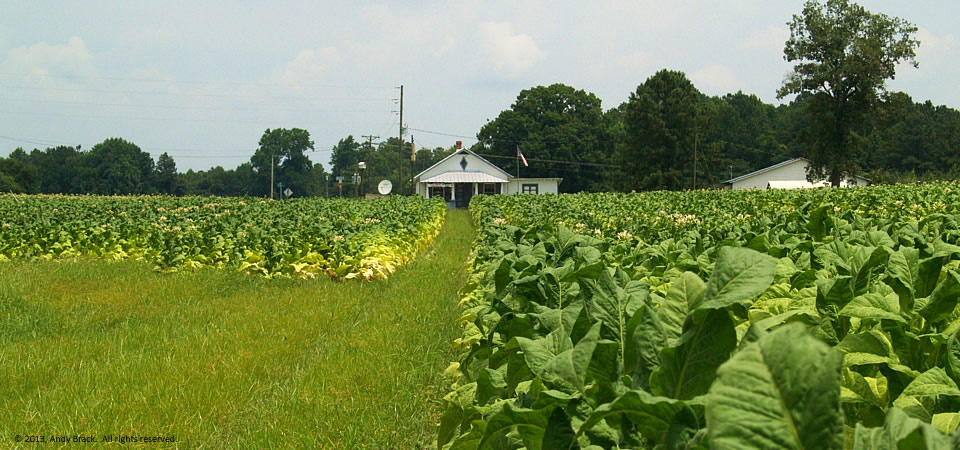
Tobacco is maturing in fields across the Southern Crescent, including this patch in rural Valentines in the southeastern part of Virginia. In the background is Wright’s Gen. Mdse., an old-time country store that doubles as a post office. Much of the store is an homage to how old country stores used to be, but you can still buy some stuff like cold drinks and crackers.
Tobacco production remains a viable business across the South, particularly the flue-cured tobacco of the American South that is used in higher-end tobacco products across the world. While China outpaces American production four-fold or more, American tobacco apparently is preferred to help flavor products. U.S. production in 2012 was about 500 million pounds and is expected to be in high demand again this year. More info.
This photo in the unincorporated Valentines community is in Brunswick County, a farming area on the North Carolina border with more than 17,000 residents. Like most Southern Crescent counties, poverty exceeds 20 percent.
Copyrighted photo taken July 24, 2013, by Andy Brack, Center for a Better South. All rights reserved.
